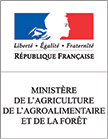Governments, private investors, and international agencies are quickly building momentum for large-scale initiatives to restore degraded land across the developing world. These initiatives are expected to deliver major economic, environmental, and social returns, and to help mitigate climate change.
There is a big risk, however, that these initiatives will fall short of expectations, or even backfire. That is unless they make clear at an early stage what roles rural people can play and how they might benefit. One pressing concern derives from the widespread gender disparities in land use and access. If left in place, these will diminish the role of women in land restoration, leading to inequitable distribution of benefits and probably reduced gains overall.
This concern demands a forceful response, particularly as countries reach agreement on climate action beyond 2020 and on the Sustainable Development Goals (SDGs). Large-scale land restoration offers an important opportunity to advance both the climate and development agendas – one that must not be squandered for lack of a well-informed gender perspective.
In developing-country agriculture, the pendulum has swung from ignoring women to using exaggerated statistics to promote their participation in development. Even the research literature may go too far in portraying women as passive victims of gender-based oppression.
Within just the last five years, however, new studies on rural land management have challenged the misleading generalities and conventional wisdom about gender roles, opening the way for a more nuanced and productive discussion, which shifts the emphasis from “women” to “gender” – that is, the relationships between men and women.
These studies shed light on the many disparities in men’s and women’s property rights as well as in their control over key resources, access to services, and participation in decision making. By bringing such gender differences out of hiding – that is, by clearly recognizing them in a wide variety of contexts – researchers have started laying the foundations for a more balanced and effective approach to gender inclusion in land management. According to recent results, strengthening women’s land rights is particularly important for increasing their investment in land.
Many recent studies also show that strong female voices are now being heard in local decision-making. This suggests that, using new knowledge and approaches based on collective action, it is possible to overcome gender stereotypes, strengthen women’s bargaining power, mobilize female members of local land-use committees, and secure meaningful female participation in land tenure reform.
Of course, men and women will continue to manage, control, and benefit from land resources in different ways. But they can learn to work more cooperatively toward the shared aim of restoring rural landscapes to health and productivity.
This high-level dialogue will focus on the practical requirements for implementing gender-sensitive land restoration; in an effort to get beyond the usual rhetoric on gender issues. To demystify gender issues in land use and lay to rest the exaggerated “zombie” statistics (as The Washington Post called them) is one of the main objectives.
The gender dialogue will bring diverse and constructive points of view to bear on the issues, representing governments, development donors, international organizations, civil society, the private sector, and research institutes.
Key questions addressed
- Why it is important for large-scale land restoration initiatives to be guided by a balanced gender perspective, which takes into account the roles of men and women?
- What are recent cases that highlight a gender perspective on land restoration?
- Which recommendations can be given for future work, including the creation of incentives for implementing gender-sensitive approaches in varied contexts?







































